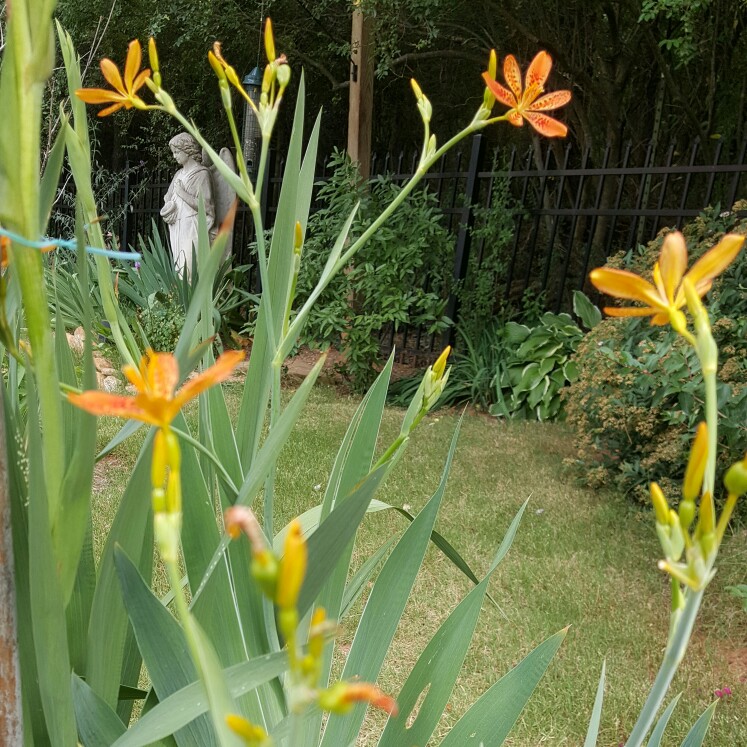
Iris domestica syn. Belamcanda chinensis
Blackberry Lily
Iris domestica grows 60–90 cm tall in full sun and is often found blanketing hillsides; the flowers can range from red to orange to yellow, or mixed, and bloom in summer to early autumn. It is a rather unusual and most attractive tuberous plant with sword-shaped leaves, and bearing loose clusters of flowers, each consisting of six petals geometrically arranged. Fairly hardy but give it a sheltered position and a little protection in winter.
Contributed by @maldavis
-
Full sun
-
Occasional watering
-
Frost Hardy: 23F (-5°C)
-
All soil conditions
Common name
Blackberry Lily
Latin name
Iris domestica syn. Belamcanda chinensis
type
Tuber
family
Iridaceae
ph
5.0 - 7.0 Acid - Neutral
Plant & bloom calendar
-
Best time to plant
full grown dimensions
 0.35 M
0.90 M
0.35 M
0.90 M
Iris domestica syn. Belamcanda chinensis
Iris domestica grows 60–90 cm tall in full sun and is often found blanketing hillsides; the flowers can range from red to orange to yellow, or mixed, and bloom in summer to early autumn. It is a rather unusual and most attractive tuberous plant with sword-shaped leaves, and bearing loose clusters of flowers, each consisting of six petals geometrically arranged. Fairly hardy but give it a sheltered position and a little protection in winter.
Planting Outdoors Autumn
From Late Autumn TO Late Autumn
Ideally the tubers need to be planted in a sunny spot so that they can receive at least six hours of sun a day as well as being planted in well drained but moist soil. They do well near water but should be at least 6 inches above water level. Avoid hoeing around the base of the plants as the roots are near the surface and easily damaged. Plenty of mulch can help avoid weed growth around them, although rhizomatous varieties should not be mulched, as this could rot the tubers.



























